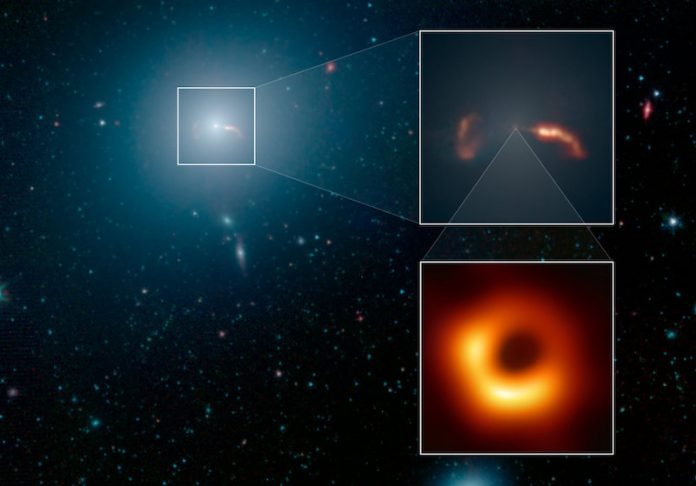
Recently, the Event Horizon Telescope (EHT) has published the first-ever image of a black hole’s event horizon.
The giant black hole has a mass of 6.5 billion Suns. It is located in the elliptical galaxy Messier 87 (M87).
M87 is located about 55 million light-years from Earth. Scientists have been studying it for more than 100 years.
It has been imaged by the Hubble Space Telescope, the Chandra X-ray Observatory, and NuSTAR.
In 1918, astronomer Heber Curtis noticed “a curious straight ray” extending from the galaxy’s center.
This ray was produced by a disk of material spinning rapidly around the black hole. It is visible in multiple wavelengths of light, from radio waves through X-rays.
Scientists found that when the particles in the jet impact the interstellar medium, which is the sparse material filling the space between stars in M87, they create a shockwave that radiates in infrared and radio wavelengths of light.
The brighter jet, located to the right of the galaxy’s center, is traveling almost directly toward Earth.
Its brightness is amplified due to its high speed in our direction, but even more so because of what scientists call “relativistic effects”.
The second jet is moving rapidly away from us that the relativistic effects render it invisible at all wavelengths.
But the shockwave it creates in the interstellar medium can still be seen here.
The shockwave is located on the left side of the galaxy’s center and looks like an inverted letter “C.”
To study the physics of the powerful jets, scientists have combined observations in the infrared, radio waves, visible light, X-rays and extremely energetic gamma rays.
Currently, studies are trying to achieve a solid theoretical understanding of how gas being pulled into black holes creates outflowing jets.
Copyright © 2019 Knowridge Science Report. All rights reserved.



